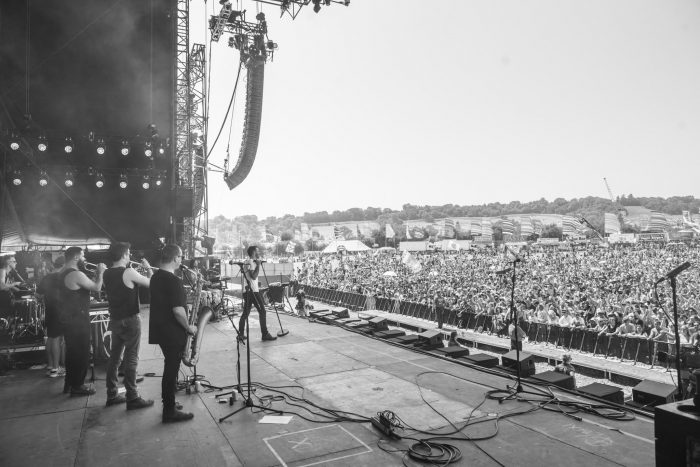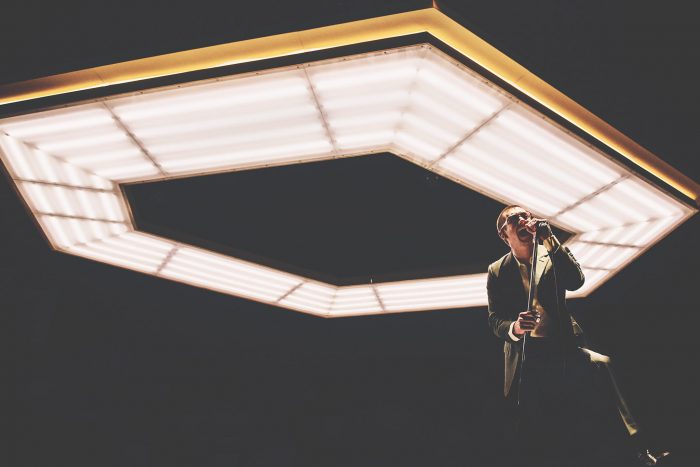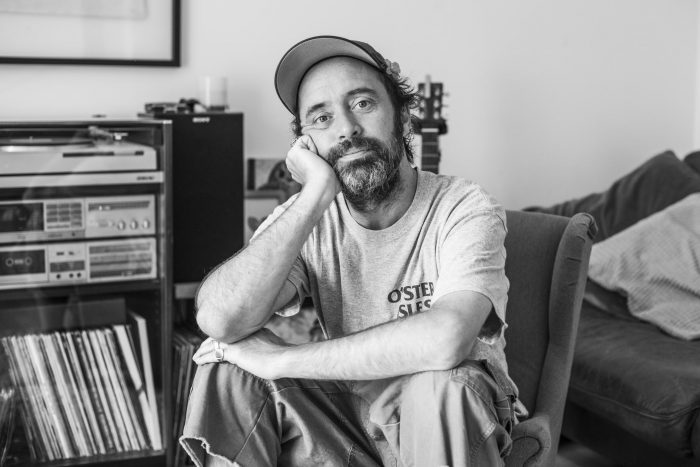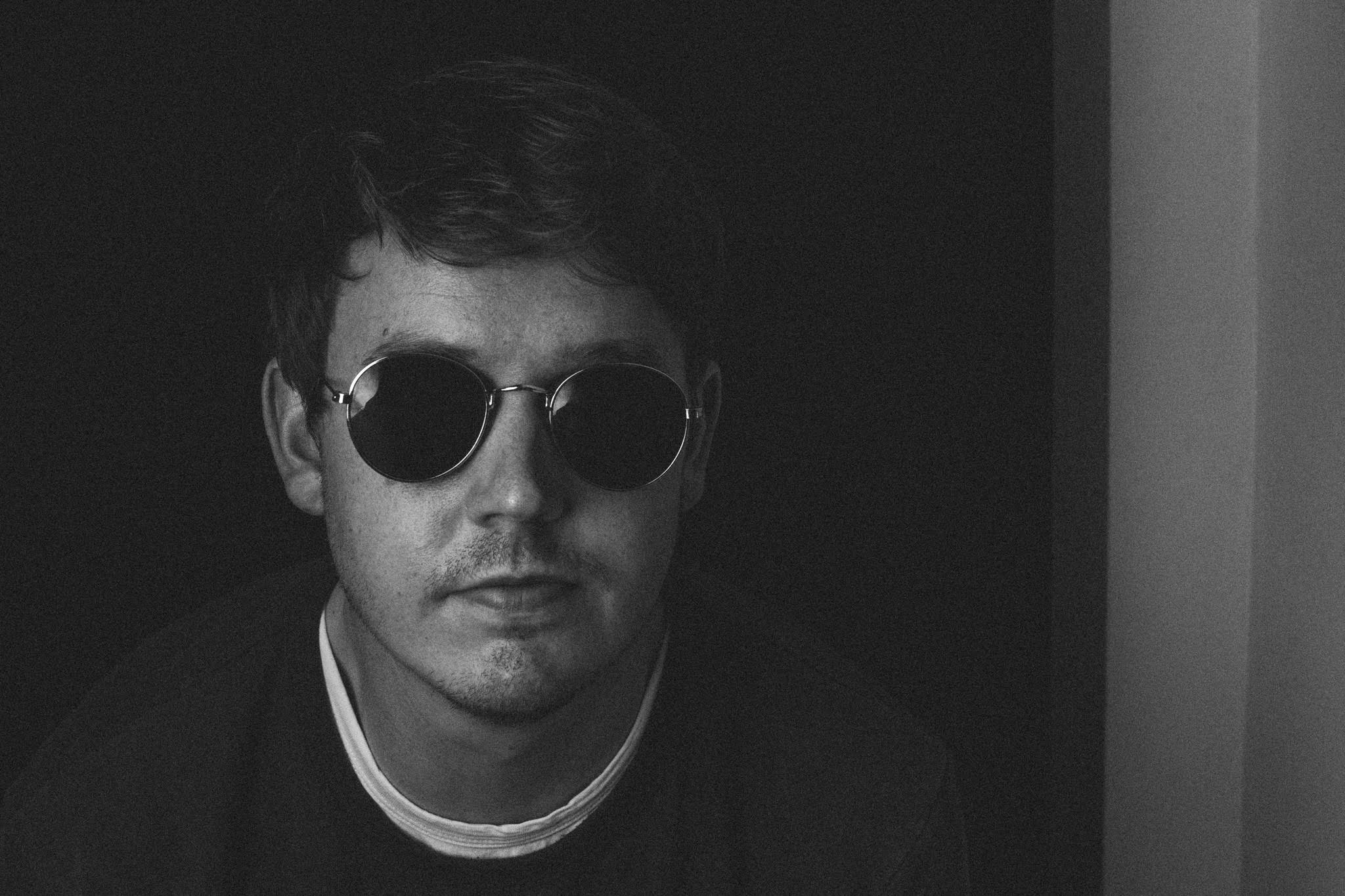Photographer Highlight | Aaron Parsons
Image Credit: Aaron Parsons
We caught up with the incredibly talented but brilliantly humble Aaron Parsons to talk about the importance of music photography, his experiences and much more.
When looking at the music industry it is easy to boil it down to labels and artists but there are wide variety of roles that are important to the industry as a whole. Between the artists and labels there are a variety of roles that help create the vibrant music scene we have today. From content creators to managers and what were focusing on this article series, photographers.
It is my firm belief that photographers are the unsung heroes of the music industry and they’re often overlooked. However, if it wasn’t for our snappy friends then the visual direction of most artists wouldn’t exist. It’s not just live photos but portraits, album covers, single covers, inner sleeve artwork all of which at some point has been touched by a photographer. In an ever visual age, in a time where social media reigns a band having striking imagery has never been more important.
In this article series we will be talking to a variety of amazing photographers who work within the music industry. Taking a deep dive into their lives as music photographers, how they operate, their influences and much more. We want to highlight just what an important and vital role they play in the music industry as a whole.
Kicking things off is Cornish born but London based photographer Aaron Parsons. A dedicated, incredibly hard working and insanely talented photographer who recently had his work used by Arctic Monkeys for their recent ‘Live At The Albert Hall’ live album.
Firstly, thank you for taking the time to answer these questions, how are you doing?
Aaron: No worries! It’s my pleasure, thank you for showing an interest in my work. I’m good overall, although a fresh January lockdown isn’t too much fun, but I think most are in agreement with that. Hoping we can kick the back of this thing soon so we can enjoy a resemblance of normality and specifically live music again. It’s certainly left a gaping hole in lots of lives, including mine.
So, when did you first get into photography and at what point did you get into music photography specifically?
Aaron: I took photography at A-Level and it grew from there really. Camera phones were just coming out and it was something that felt quite natural to me and I got a lot of enjoyment from photographing the Cornish coast where I lived. I ended up doing a degree in photography which only inspired me further, learning about the medium, its history and all the wonderful artists gave me the impetus to take it further still.
Music photography came a little later. And as I’m sure you know, like many photographers, it all began shooting any gig I could for nothing. It evolved into my work quite naturally as I was such a lover of live music. I think my first gig was one of my favourite local bands, Mad Dog Mcrea, which actually for me, was jumping in at the deep end as they were my absolute heroes. It went relatively well though and I recently found the shots from that gig funnily enough. I like some of them, but you can see how I struggled with such low light and what was probably quite an average camera at the time.
What was the draw to music photography for you?
Aaron: There’s so much that comes to mind. The thrill of a live gig in general is something else. When you walk into that room and see the misty stage and sound tech guys. What a feeling. I remember as a kid not quite believing that my idol was metres away on stage and I could actually hear their voice or instrument with my own ears. In fact, it didn’t even have to be my idol, I remember watching Sum 41 and feeling like that. No offence Sum 41. Live music is just a joy to behold and there’s something pretty magical about it.
“The thrill of a live gig in general is something else”
Aaron Parsons – Photographer
There’s always part of me that dreamt of being in a band myself but I just knew I didn’t have that gift to pull it off. So early on, I guess photographing music was in a way, the next best thing. If I lacked talent to produce from the stage, I felt that I had talent to encapsulate what I and so many people experienced in the crowd.
Being a part of the music industry was certainly a big draw in itself. I felt inspired and just wanted to be close to it, or part of it in some way. There’s always that dream that your image will be used by a band, an album cover being the pinnacle of that.
Was there a particular photographer’s work that inspired you or perhaps a certain artist?
Aaron: I am trying to rack my brain in terms of a music photographer that inspired me specifically in the early days, but it was more the portraiture of Annie Leibovitz, David Bailey, and Eve Arnold that struck a chord. Their work within the music world is beautiful.
Today there are so many amazing photographers that pop in and out of my feeds, although it was a local photographer and friend Lewis Pinder whose work I liked shortly after uni. We ended up photographing a similar music and festival scene in Cornwall and his work felt fresh, unique and always caught my eye. He’s doing wicked things now too. I should also mention you Kieran! Your photograph of The Flaming Lips is easily one of my favourite live shots. Vivid and rich, it’s a banger. A band I would love to shoot too.
Oh Charlie Sarsfield just sprung to mind. Pretty cool contemporary music photographer!
Are there any particular artists or gigs you’ve photographed that stand out for you? If so why?
Aaron: Oh boy yes. I feel that I’ve been so lucky over the last few years. Firstly, I have been obsessed with an Australian band since I was a teenager called The Cat Empire. My sister introduced me to them after her travels to Aus where she actually met and got to know them. This band are the very definition of light and love. They bring the party to any gig like you wouldn’t believe. I know people say it a lot, but this band really are the best live act I’ve seen. They get the crowd swaying and flailing in every which way.
To cut a very long story slightly short, I was lucky enough to get a photo pass via a magazine to photograph TCE in London five or so years ago. It turned out to be one of their best gigs I had seen but this wasn’t “THE ONE”, little did I know at the time. I photographed them once or twice again and things gathered a bit of momentum with the band’s management. A few months before Glastonbury 2019, I get an email from the manager. “We want you to photograph the band’s two performances at Glastonbury, opening The Other Stage and headlining The Avalon on the same day”. Mic drop, my dreams really did come true at that moment. It was off the hook.

I remember standing at the side of The Other Stage looking out at the typical Worthy Farm masses just not believing it. The sound from the stage is unreal too, well it’s actually incredibly real. It sounds immense.
That really would take some topping. It was hard work though, I remember being pretty stressed out on the day as they required photos from both sets straight away and I was camping on a farm in a heatwave. After the first set, I was frantically editing backstage and when done, watched on as management and band crowded around a laptop looking through the shots. That was nerve-racking! It was amazing to meet the band who were lovely (not one of those ruined meeting your hero moments) and have welcomed me back to future gigs since then. It’s a shame they are based in Australia as I guess it could have proved more regular, I’ve always wanted to tour with a band documentary style.
I’ve photographed some really special performances over the years and can’t list them all. I’ve worked with Nick Mulvey quite a lot, he’s awesome to shoot. Such a mesmerising performer and for some reason, certain bands/artists are just so photogenic and he’s one of them. Lighting is important, so important and my word do I owe thanks to light and tech teams. The Cat Empire’s lighting lady I think was called Paula, without lighting, photos don’t sing.
I nearly forgot Paul McCartney! This is awful, I am totally name dropping now but this was another fantasy. I photographed him perform in Liverpool exclusively for The Guardian. Only drawback which I didn’t know until I arrived was that photographers could only shoot from the sound desk. Bummer. In my opinion, all emotion and atmosphere is captured from the pit or stage or even from the crowd… not so much from the sound desk 50 feet away. But still, it was Paul McCartney, who am I to complain?
And then there’s your next question…
Recently your photography of Arctic Monkeys at the Royal Albert Hall was used for their promo of the live album, how did that feel? What was it like seeing your work used by one the world’s largest rock bands?
Aaron: This one is yet to sink in. Lost for words. Arctic Monkeys were an entirely different ball game. The Cat Empire was somewhat fathomable but this was another level. The night itself was insane. The gig was 2 years ago and by that point, I had photographed a lot of gigs. You never get used to music photography, it rarely goes right! But I was certainly experienced at this point. This meant absolutely nothing by the time I was standing in the pit waiting for my all-time idols to walk out on stage. There’s not many bands that give me that in awe, star struck feeling, but these guys do. To say I was nervous would be underselling it, I was shaking. Adrenalin soon kicked me into gear though and I captured my favourite band in one of the most beautiful venues and it will go down as one of the most special nights of my career.

So when the band’s management decided they wanted to use my imagery for promotion of the upcoming album – Live At The Royal Albert Hall, I didn’t know what to say and I still don’t really. It was all so surreal. I had to keep it secret of course and I just wanted to tell people, especially my family. I’ve learnt over the years that things can fall through at the very last second so I had to keep my cool the entire time, almost expecting it not to happen. Then it happened. There was lots of ‘toing’ and ‘froing’ before the release and management during one of the latter stages even emailed saying the band were now reviewing my images, choosing which ones they wanted to use, if they wanted to use them at all. Haha, it’s ridiculous really.
“When the band’s management decided they wanted to use my imagery for promotion of the upcoming album – Live At The Royal Albert Hall, I didn’t know what to say and I still don’t really”
Aaron Parsons – Photographer
Arctic Monkeys are donating all album proceeds to the charity War Child which is an amazing cause by the way. I will soon be releasing some limited edition prints from that night, donating proceeds as well.
Did you ever expect your work to be featured by such high profile artists?
Aaron: No. This was the ultimate. Someone commented on Instagram “This will take some beating” and I don’t think this will be beaten, I might as well stop now! Someone within the industry also emailed saying “the band and management are notoriously protective of how they’re represented visually so its testament to your amazing pictures that they are the ones they have chosen to use.” So stoked.
When you go for a shoot how do you prepare? Talk us through your process?
Aaron: So many cliches spring to mind. But you can’t be too prepared and when you are busy it’s very easy to forget this simple rule. I once drove straight from a shoot in Cornwall to a gig in Shepherds Bush, not ideal.
Charge everything, clear everything and clean everything. If I’ve not shot at the venue before, I do a bit of research and get there early. Things change so easily on the night and as I have mentioned, rarely go to plan. Bring spares! It’s one of the most unpredictable styles of work and you often only have 3 songs to get it right, just 2 sometimes. From busy pits with bolshy press photographers to hardly any light, you have to be prepared for anything and try your best not to panic. I’ve had SD cards jam, lens changes and last minute moves to a sound desk. It’s madness. Two cameras is a game changer.
How did you get the opportunities that you have and what advice would you give any budding music photographers?
Aaron: I worked really hard and had a lot of “downs” before these massive “ups”. And I still do. It really is amazing to write it all down on paper, it hits home a bit. But I guess it’s a constant battle in some ways. It sounds so glamorous but the reality is that those things aren’t regular. They can be for some photographers, but not many in the grand scheme of things. It’s about learning to balance your work/career with things that make you passionate and things that pay the bills. I know I’m not a key worker and my job on the surface can appear quite easy, but I do a lot of crap jobs that can often be pretty stressful and sometimes I’m treated quite poorly. People forget you have to generate all this work, run the business side of things and then produce the product you are selling too. I still enjoy an artistic element within most shoots, but sometimes the commercial stuff can feel a little bit compromising. I feel very fortunate to make money doing photography though, even if every now and then I want to give it up! Having breaks can recharge those creative batteries.
At the beginning I contacted endless people, offered to work for free whilst juggling other work and simply just said yes. Saying yes was scary at first, but say it and find a way of getting there after. Then there’s the continuous chasing via email which I still do today! I am undoubtedly annoying at times but it works. You have to keep in people’s minds as everyone is so busy. I have endless lists, endless reminders and there’s always thinking about who you can contact, researching, looking for opportunities. I did all I could really, although you can always do more.
It’s hard to get in with a band. So many have a trusted “go too” photographer, so the chances are slim. Take a punt with up and coming bands and then of course find other ways in, through magazines or blogs for example.
I don’t want this to sound like some spiel from an Apprentice candidate! There’s a huge sprinkle of luck that you can find if you just put yourself out there. It’s not all about work, it’s about energy and finding the right leads and avenues to go down.
Why do you feel music photographers are so important to the industry and artists alike?
Aaron: We are in a visual age more than ever before. The music industry doesn’t make the same kind of money as it used to, solely on being successful anyway. I think artists have to sell themselves more, promote more and engage with their fans more. Media is vital for that.
On an artistic level, photography has always come hand in hand with gigs. There’s endless elements that bring a gig to life. There’s so much atmosphere, emotion and creativity on stage and if that’s not captured, it’s almost a waste. Insane amounts of time go into that performance from the crew to the band, it’s a momentous effort that deserves being archived in beautiful ways.
Do you feel that visual aid to an artist is extremely important, particularly in this internet age?
Aaron: Totally. As I touched upon above, it’s as important as it’s ever been. I think you can see more artists accepting that too. Even the biggies… maybe not all of them. The Cure and Radiohead still standing strong in some ways haha. But in all seriousness, you can’t just be gifted or successful anymore. It’s not enough. Connectivity is massive and it might sometimes suck the life and magic out of it, but it’s also amazing to feel close to your heroes and get an insight into their lives.

Why do you feel it is important for bands to work with professional photographers?
Aaron: I think both can support each other. I find photographers can sometimes get a bit left behind or forgotten and I have experienced both sides of it. I’ve had amazing feedback and gratitude and then felt quite used through lack of accreditation, payment and appreciation in general. Without music photographers you can’t sell the band and without the band, music photographers don’t exist. I am aware that these people are stars, they possess a unique gift and egos can run high but photographers are skilled creatives too and that shouldn’t be taken for granted.
It’s not an easy form of photography as I’ve said. It can be so tricky and demanding technically and increasingly competitive too. I personally love it because it’s off the cuff, spontaneous and intuitive. Artists will ultimately notice the difference between an experienced photographer and an amateur I think. That’s not to say amateurs can’t be good music photographers! It’s more the whole – getting your mate with a camera to shoot the gig or wedding rather than paying a professional I’m not as keen on. That ethos of “they’ve got a good camera, save money” doesn’t sit well. Photography technically is a lot more accessible than it used to be, so the person behind the lens has to demonstrate why they are a professional which thankfully in live music is easier than other aspects of the medium.
“Without music photographers you can’t sell the band and without the band, music photographers don’t exist”
Aaron Parsons – Photographer
There’s so many different types of photographer. Quite early on I felt that lots of music photographers were fairly press driven, primarily because that was their job. Lots of publications just want to see Alex Turner’s face perfectly lit, they’re not too fussed by atmospheric shots or a creative license per se. I didn’t want to go down this road though and wanted my music photography to be artistic and I guess this is something that bands can benefit from when choosing between photographers.
In the pit or at events I actually see a lot of unhappy faces, most of whom work for press agencies. I think there’s a big difference between a press photographer and a music photographer but I’m not saying the two can’t cross over. However, some if not most of the press photographers I see in London, certainly don’t approach the work in a similar vein to me, nor do they seem to get the same buzz. These photographers seem tough but stretched, fed up and this is potentially down to poor pay in return for slogging their guts out for years. Maybe the love has been zapped a bit which can happen. I worked at some pretty big festivals in London a few years ago and some of the press photographers said how hard it was to sell work as it’s so competitive these days. Budgets are smaller and people are being undercut left, right and centre. It can be tough, especially if that’s your niche. It was odd to get their take on the industry. It’s very much bread and butter stuff, get in and get out and for me, that’s not what music is about. With that said, some of the world’s most inspiring and significant art has been captured by photojournalists. Maybe I’ve just not come across that romantic documentary photographer in my circles.
I think agencies in general can sometimes undermine the individuals out there and close doors on the artistic side of things or at least undervalue it. Not just in music but I’ve had experiences with companies who have contracts with the likes of Getty and therefore aren’t interested at all.
I hope that more bands get vocal about phones. I feel sad watching old festival footage or memorable shows and everyone in the crowd is so captivated, so in the moment. Where as, I was watching Beyonce’s Coachella performance the other day (Glasto one way better I think) and the crowd was 99% absorbed by screens, held high in some strange dystopian collective. My point is that, photographers are there, let them get the memorable moments, promote work, sell art and make a living from it. Maybe every gig should have one song where you can use your phone for social media and memories but holding a device aloft the entire time watching through a screen is ludicrous to me. We have a wider problem with phones I think, but that’s a conversation for another day!
What advice would you give to bands looking to work with photographers on live shows, artwork and releases?
Aaron: To be respectful and be aware that photography can be that person’s primary form of income, that they’ve saved and saved for the equipment and that they possess a talent too. “Be humble” as Kendrick says.
Budgets aren’t often high in the music industry and I understand that. I work within many areas of photography so I can pay the bills and I know that making a living solely on music photography is unlikely. But I would implore artists and bands to pay something, even if it is little and always credit. Big up musician Beans On Toast here…
Oh and instead of just a camera emoji in the post text, maybe say something like “amazing photos by David Bailey”. That would be cool.
Communication is key, nice band managers go a long way and I’ve worked with some really lovely people. I myself need to remember lots of these people get hundreds of emails daily, but at the same time it’s not hard to write those few extra words, never forget your please and thank you’s. I get a lot of one word responses. I get called Adam and Andy a lot too haha.
Give someone a chance, even if they’re fresh out of uni, pay them and tag them. It might just make their year.
